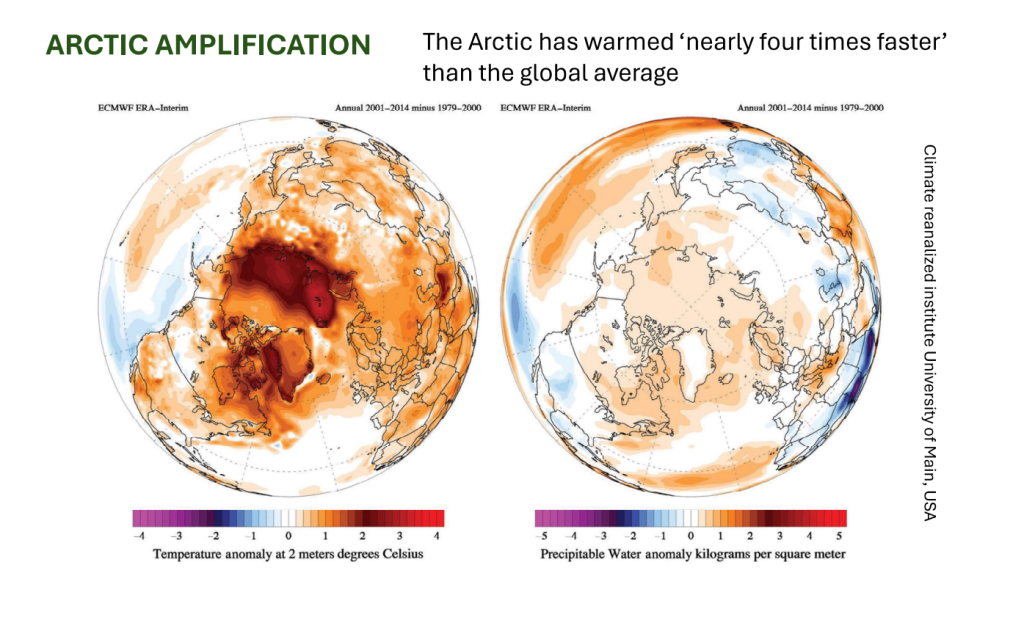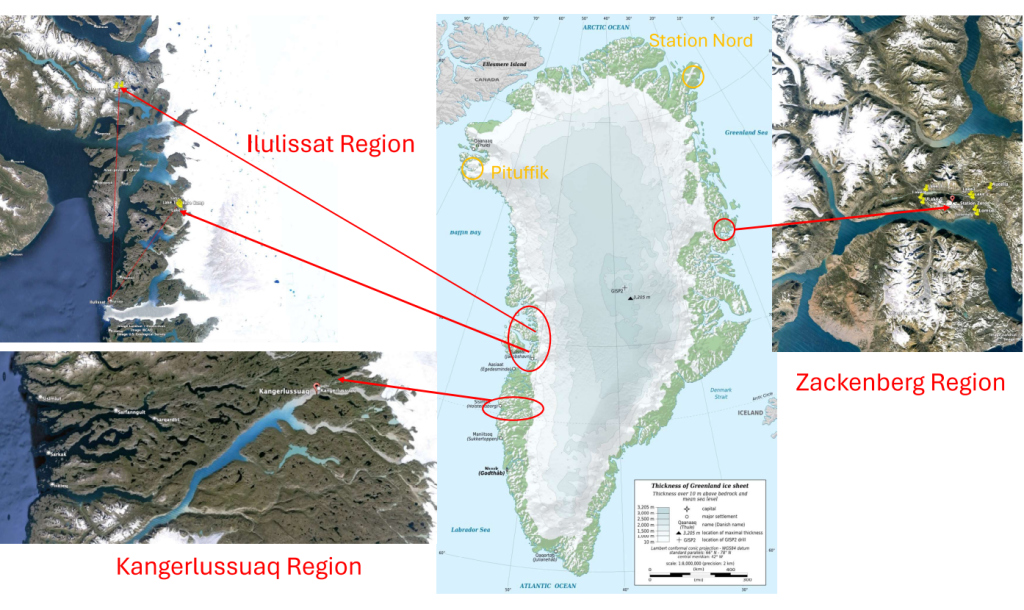Did you know that the melting of the Arctic and the anomalous cold of this month of June in Europe are related?
What happens in the Arctic, much to our dismay, does not stay in the Arctic and has effects on the entire planet. Today, these polar areas are experiencing dramatic changes that are modifying the entire climate system and bringing this sense of climate chaos that we have been experiencing for a few years. Climate change, of human origin, is being the cause. We explain it to you.
Catalan scientists such as Santiago Giralt from Geosciences Barcelona (GEO3BCN), a research institute belonging to the Superior Council of Scientific Research (CSIC) and Sergi Pla from CREAF and the UAB, are studying what consequences global warming could have on the climate system of the entire Planet. To do this, they are carrying out extensive fieldwork as part of the NEOCLIM project: Reconstructing neoglacial climate variability in the polar North Atlantic with geochemical and biological studies of sediments collected from Greenland ponds. Recently, they have been on an expedition to this frozen land and they have told us that what they experienced there explains this anomalous month of June that we have had in all of Europe.
What is your starting hypothesis for doing this research?

Sergi Pla (SP) - For years, science has hypothesized that the polar jet stream is weakening and that this is leading to a certain climate chaos. The polar jet is a stream of large winds located between 9 and 12 km high that blow from west to east rotating in a straight line and separates the polar climate from that of mid-latitudes, such as ours. When the polar jet weakens, the gyres of the current are increasingly undulating and this causes changes in the global climate. This jet stream controls both the positions and sizes of anticyclones that are very important to us, such as the one in the Azores or Greenland, as well as the position of the passage of the rain fronts that come from the Atlantic Ocean. Therefore this could be modifying part of the atmospheric climate system.

Santiago Giralt (SG) - More than 10 years ago we began to test this hypothesis by studying how the position and intensity of the anticyclone in the Azores had changed over the last 5,000 years and, for three years, we have been doing so by reconstructing the climate that has existed in Greenland for the last 8,000 years.
Why is this jet stream changing?

Well, because of a phenomenon that the arctic is experiencing that is called arctic amplification. In the Arctic, temperatures are rising at a rate 4 times faster than the global average due to melting Arctic ocean ice, reduced snowpack, changes in evapotranspiration, and other weather anomalies that are back -they all feed on each other and give rise to this phenomenon of acceleration of warming.

Thus, although the Arctic is still one of the coldest regions on Earth, the temperature gradient between the Arctic and the warmer areas of the planet has been decreasing every decade. The polar jet stream is formed by the great temperature contrast between the poles and the rest of the planet. When warm air currents collide with cold currents, this circular current is formed that rotates around the poles at high speed. Now, with climate change, as the poles warm, the temperature contrast between the North Pole and the rest of the world decreases, causing this current to weaken, not rotate as strongly, and become more wavy its route.

And what can cause a weak and erratic polar jet stream?

If the arctic oscillation is positive, the current is strong and robust, with a meandering shape but with very smooth grooves. This occurs when atmospheric pressure is lower than usual in the North Pacific and Atlantic. On the other hand, when the oscillation is negative (with a pressure scenario opposite to the previous one), the current weakens and the grooves become much deeper, causing the cold air in the vortex to polar reaches middle latitudes like Europe. This second climate scenario can bring inflows of very cold air to our continent or, depending on the position of the undulation of the jet stream groove, it can involve inflows of warmer air masses from tropical latitudes. In both cases, the weather will be more extreme or unusual for the time of year.


In addition, when this jet stream weakens and undulates very markedly, the anticyclone of the Azores and that of Greenland, two key anticyclones that greatly affect the European climate, also change their location and size, which it makes both the temperatures and the rainfall regime vary in our latitudes. Depending on how the jet stream groove is located, the Azores anticyclone is pushed north or towards more southern latitudes. This implies drought conditions, especially in winter, in the first case, while in the second case there is an increase in rainfall. It can also happen that, depending on whether the groove of the jet stream that affects our house is before or after our position, the Azores anticyclone moves away from us or closer to us, significantly modifying the amount and storm intensity.

Exactly! We have the polar jet stream out of whack, it's more wavy than a few years ago and that's why the natural climate pattern is changing significantly.
So what we experienced this June has to do with the North Pole Jet Stream?

Let's see, it's true that the climate is a fractal of meteorology, and that what happens today or tomorrow is affected by the general climate we have. However, we know that weather and meteorology are not the same: meteorology refers to the weather today or tomorrow, it makes short-term predictions. Climate, on the other hand, captures the trends of the last 30 years, for example, and needs to be studied on a large scale.

What we know for sure is that the meteorology of this anomalous summer could be explained according to this hypothesis because it responds to the hypothesis we are studying. That is why it is so important to be able to reconstruct the climate and have data to corroborate it. However, to know for sure, it will be necessary to carry out attribution studies, studies that specifically relate episodes of this type to climate change.
And how can we rebuild the climate?

To do this we are using the sediments of different lakes in Greenland. These sediments have marked the climatic conditions of the last 8,000 years in the area, like a history book, and we have learned their language and set out to decipher its content. If we see large differences between east and west in some years, it means that there have been years where the jet stream has weakened enough to make a very deep and narrow groove, which means that at one end of the island is hotter than the other. How is it happening this summer in Europe, that half of Europe can have temperatures well below average, while the other part has temperatures clearly above, due to the marked furrows presented by this arctic polar jet.
So you have collected sediment samples that you will now analyze? How will you do it?

That's right, we collected the sediments through some witnesses that we dug at great depth in different lakes in Greenland, on the west and east side of the island. This allows us to have sediment tubes where each layer tells us every moment, and we can count hundreds of layers that tell us thousands of years of climate. We have developed geological, chemical and biological indicators that allow us to understand each layer and relate it to the temperature and pattern of snowfall, ice, thaw, etc. This is how we will reconstruct everything that has been experienced in this corner of the world.

And what happened there will allow us to understand what can happen here?

Yes, what happens in the Arctic does not stay there, it affects the whole Planet. The climate system is made up of different parts and this is one of the most important. Studying in Greenland allows us to detect the changes in this jet stream in a more accurate and direct way, because it is a very close area, and its lakes have been isolated, so its sediments are a valuable study element incalculable.
Are the Greenland sediments already in Catalonia?

No, they will arrive in mid-July, the process to be able to bring them here is very complex and full of bureaucracy because Denmark protects this territory a lot to defend it from the plunder of natural resources. We hope to be able to analyze them from this summer and to have results at the beginning of next year.
So, the efforts of the scientific community to reconstruct the climate patterns of the last 8,000 years through sediments collected in Greenland will promise a deeper understanding of the impacts of climate change. This research will not only allow us to better understand the processes in the Arctic, but will also give us crucial clues about how our climate could evolve globally.
Now, with the sediment samples on their way to Catalonia for analysis, we hope to see results that will enlighten us about the future climate, showing us how what happens in this remote place can have repercussions on all of us.







